
Red Hill is an area of Worcester, Worcestershire, England. It is in the south-east of the city on the A44. It has historically been used as high ground to attack the city and as a place of execution.

Red Hill is an area of Worcester, Worcestershire, England. It is in the south-east of the city on the A44. It has historically been used as high ground to attack the city and as a place of execution.
Red Hill is mentioned regarding King Stephen's attack upon the city of Worcester in 1149. He burnt Worcester and expelled William de Beauchamp, but the castle against which he raised two forts at Red Hill near Digly and Henwicks Hill resisted his attacks. It was said that the remains of this fort could still be seen in 1820. [1]
In the 17th century, it was an area of execution. Edward Oldcorne and Ralph Ashley who had been captured at nearby Hindlip Hall were hanged, drawn and quartered on 7 April 1606. [2] Holy relics of these Jesuit priests are still revered today. The others executed were a tenant farmer named Perkes, Humphrey Littleton and John Wintour. All were executed for involvement with the Gunpowder plot. Franciscan priest John Wall was executed at Red Hill on 22 August 1679 during the time of Titus Oates's alleged plot. [3]
The hill featured also in the Battle of Worcester in 1651 when it was fought over by Royalist forces and Oliver Cromwell's forces. Cromwell used the heights of Red Hill and Perry Wood to hold his artillery and most of his troops on 29 August 1651. [4] At the time Red Hill was just outside the city gates. [5] The Royalist attacks on the guns were turned back because there was a Worcester spy named Guise. He was caught and hanged. [6]
Red Hill continued to be a place of execution for some time. On 16 August 1805, for instance, it is recorded that W.Dalton was executed for two counts of burglary. It was said that "His demeanour was becoming". [7]

Worcester is a cathedral city in Worcestershire, England, of which it is the county town. It is 30 mi (48 km) south-west of Birmingham, 27 mi (43 km) north of Gloucester and 23 mi (37 km) north-east of Hereford. The population was 103,872 in the 2021 census.

The Battle of Worcester took place on 3 September 1651 in and around the city of Worcester, England and was the last major battle of the 1639 to 1653 Wars of the Three Kingdoms. A Parliamentarian army of around 28,000 under Oliver Cromwell defeated a largely Scottish Royalist force of 16,000 led by Charles II of England.

Henry Ireton was an English general in the Parliamentarian army during the Wars of the Three Kingdoms, and the son-in-law of Oliver Cromwell. He died of disease outside Limerick in November 1651.
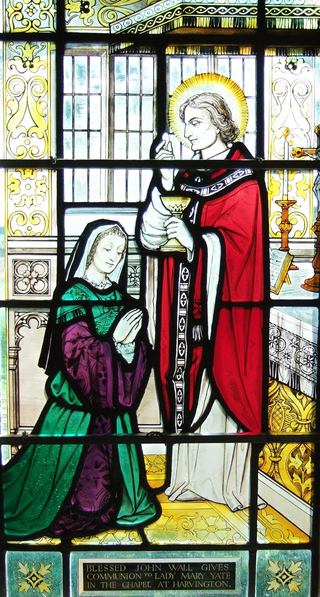
Saint John Wall,(aliases John Marsh, Francis Johnson or Dormore or Webb, religious name "Joachim of St. Ann")O.F.M., was an English Catholic Franciscan friar, who is honoured as a martyr. Wall served on the English mission in Worcestershire for twenty-two years before being arrested and executed at the time of Titus Oates's alleged plot.

The Anglo-Scottish war (1650–1652), also known as the Third Civil War, was the final conflict in the Wars of the Three Kingdoms, a series of armed conflicts and political machinations between shifting alliances of religious and political factions in England, Scotland and Ireland.

The area now known as Worcestershire has had human presence for over half a million years. Interrupted by two ice ages, Worcestershire has had continuous settlement since roughly 10,000 years ago. In the Iron Age, the area was dominated by a series of hill forts, and the beginnings of industrial activity including pottery and salt mining can be found. It seems to have been relatively unimportant during the Roman era, with the exception of the salt workings.

The Cromwellian conquest of Ireland or Cromwellian war in Ireland (1649–1653) was the re-conquest of Ireland by the forces of the English Parliament, led by Oliver Cromwell, during the Wars of the Three Kingdoms. Cromwell invaded Ireland with the New Model Army on behalf of England's Rump Parliament in August 1649.
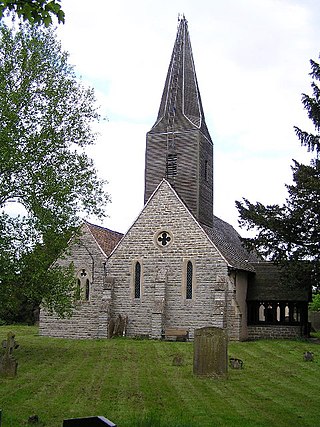
White Ladies Aston is a village in the Wychavon local government district of Worcestershire, England, United Kingdom, and also lends its name to the civil parish in which the village is located. The village is located to the east of the A44 which started as a Saltway linking Droitwich to Oxford. To the south is Pershore and five miles west is Worcester. The parish is bound to the east by the Bow Brook. The parish, according to the 2011 census, has 87 households with 220 residents.

Powick is a village and civil parish in the Malvern Hills district of Worcestershire, England, located two miles south of the city of Worcester and four miles north of Great Malvern. The parish includes the village of Callow End and the hamlets of Bastonford, Clevelode, Collett's Green, and Deblins Green.
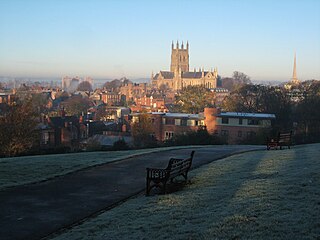
Fort Royal Hill is a park in Worcester, England, and the site of the remains of an English Civil War fort.

Limerick, in western Ireland was the scene of two sieges during the Irish Confederate Wars. The second and largest of these took place during the Cromwellian conquest of Ireland in 1650–51. Limerick was one of the last fortified cities held by an alliance of Irish Irish Confederates and Royalists against the forces of the English Parliament. Its garrison, led by Hugh Dubh O'Neill, surrendered to Henry Ireton after a protracted and bitter siege. Over 2,000 soldiers of Cromwell's New Model Army were killed at Limerick, and Henry Ireton, Cromwell's son-in-law, died of plague.

The second and longest siege of Worcester took place towards the end of the First English Civil War, when Parliamentary forces under the command of Thomas Rainsborough besieged the city of Worcester, accepting the capitulation of the Royalist defenders on 22 July. The next day the Royalists formally surrendered possession of the city and the Parliamentarians entered Worcester 63 days after the siege began.

Edward Oldcorne alias Hall was an English Jesuit priest. He was known to people who knew of the Gunpowder Plot to destroy the Parliament of England and kill King James I; and although his involvement is unclear, he was caught up in the subsequent investigation. He is a Roman Catholic martyr, and was beatified in 1929.

Hindlip Hall is a stately home in Hindlip, Worcestershire, England. The first major hall was built before 1575, and it played a significant role in both the Babington and the Gunpowder plots, where it hid four people in priest holes. It was Humphrey Littleton who told the authorities that Edward Oldcorne was hiding here after he had been heard saying Mass at Hindlip Hall. Four people were executed and the owner at that time barely escaped execution himself due to the intercession of Lord Monteagle.
Humphrey Littleton, or Humphrey Lyttelton, was a member of the Lyttelton family, who was executed for his involvement in the Gunpowder plot. Robert Wintour and Stephen Littleton who had escaped from the fight at Holbeche House were captured at Hagley Park on 9 January 1606 despite Littleton's protests that he was not harbouring anyone. It was Littleton who told the authorities that Edward Oldcorne was hiding at Hindlip Hall after he had given him mass. Wintour, Oldcorne, and both Littletons were all executed.

Worcestershire was the county where the first battle and last battle of the English Civil War took place. The first battle, the Battle of Powick Bridge, fought on 23 September 1642, was a cavalry skirmish and a victory for the Royalists (Cavaliers). The final battle, the battle of Worcester, fought on 3 September 1651, was decisive and ended the war with a Parliamentary (Roundhead) victory and King Charles II a wanted fugitive.

Eusebius Andrews, December 1606 to 22 August 1650, was a London lawyer and Royalist during the Wars of the Three Kingdoms, executed for his part in a 1650 plot to restore Charles II of England. A prominent supporter of the Crown since the early 1630s, he was a determined conspirator who organised a number of Royalist risings in Cambridgeshire between 1642 and 1650.
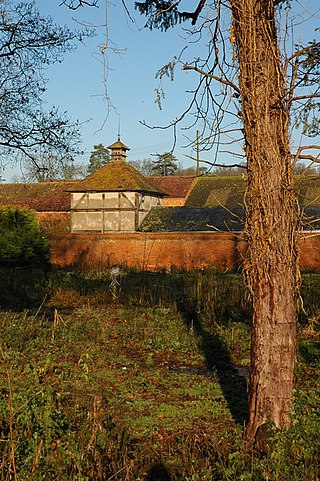
Spetchley is a hamlet and civil parish in Worcestershire, England, that lies in the district of Wychavon, half a mile from Worcester, along the A44 road. Spetchley contains Spetchley Park, a country mansion with extensive gardens.
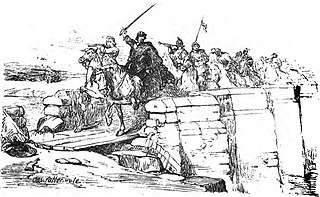
The Battle of Upton was fought on 28 August 1651 when a New Model Army detachment under the command of Colonel John Lambert made a surprise attack on Royalists defending the river Severn crossing at Upton-upon-Severn, 6 miles (9.7 km) below Worcester. In the action which followed the Royalist commander Major General Edward Massey was severely wounded and the surviving Royalists were driven out of the town and north along the Worcester Road.